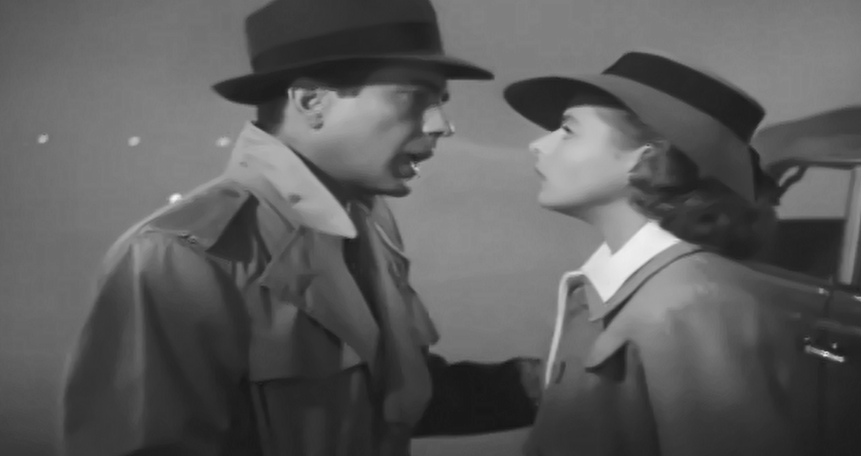All posts by Scarlett Lilley
Filters
Pans Labyrinth
First response
| Score out of 10 | Memorable scene | Iconic image |
| 8/10 | A memorable scene for me was when she goes into the pale man’s world and eats the grapes. I think the Mise en Scene of the scene made the room feel magical and otherworldly in comparison to her bedroom. The sound of a humming mixed with a dramatic underscore throughout the scene also creates a lot of tension for the scene. The Proformance of the way the pale man moves are also off putting making the scene even more dramatic | Get screen grab 21:19 The iconic image for me is the stairwell that she walks down to meet the faun. This is where the movies’ magical theme starts and end. I also find the background information of this being an entrance to the underworld really a key feature of why i think the birds eye shot of her walking down it is important as it shows the beginning and the end of her journey. |
4 Micro Elements
The motif of the lullaby that Mercedes hums for her at various times throughout the movie. It is often played in times of sadness when Mercedes is trying to comfort Ofelia in moments of the distress such as when her mother is ill. It also plays in the beginning of the movie to open the scene up and the end when Ofelia has completed her quest. The lullaby i think for me showed vital moments but also for example at the end brought me back to the beginning as i remembered hearing in then possibly symbolizing the beginning and the end of the movie on her journey to go back to being a princess.
Mise en Scene
When Ofelia goes on her quest to get the key from the toad. You see her crawl through an underground muddy tunnel which is dimly. However, the set of the muddy tunnel of it somehow are made otherworldly and the composition of the set shows a lot of depth to the area. I personally think the way the set is designed throughout the movie makes the mise en scene so great throughout the movie. The tunnel is purposely muddy and dirty to show the length that she is going to complete these desks eve ruining her dress that her sick mother made for her to get the key. I think showing the area as not natural and giving the scene a great amount of mise en scene really creates the effect that she is almost entering a different world to the viewer and creates a contrast when she returns to the real one.
Editing
The editing techniques that stood out to me was the point when the camera pans down to the bath, then pans down into the tunnel stairway seamlessly. The way that the scenes are combined I think show that Shes always thinking about the stairway and quickly moves the change of setting for the viewer. However, I think there is also match cutting in the movie between the wo narratives taking part being the magical world that Ofelia steps in and the captain’s harsh reality of the war. An example where this takes pace is Ofelia handing the key over to the faun then it quickly cutting to the captain opening the door with a key showing the themes are familiar but so different between the two worlds by the editing used.
Cinematography
I think the opening shot where it slowly pans in Ofelia laying on the ground dead and slowly moving into her eye is one of my favourite bits of cinematography in the film. The slow movements of the camera allow the spectator to see the character clearly for the first time and establishes her as a main character well as allows you to notice that you are seeing things from her point of view symbolized by her eye. Another feature of the cinematography is that the movements of the camera are more fluid in the fantasy world but in different way to the captain’s world they are steadier and ridged this really creates a contrast with the cinematography between the two worlds showing the raility of the war.
Gender paragraph
The binary opposites between male and female
The binary opposite between male and female is created by multiple features in the movie. The captain is often represented in a blue dark light and is often associated with broken items and knives created a negative light around him throughout the movie. His attitudes also create a binary opposite to those of the females with him being tradiontial tough and represented as almost a monster who takes power over anything else. However, the females in the film are more caring with a example being Mercedes who cares for Ofelia but also takes on. a strong and powerful female role at the same time which was non tradional for the time. Woman in the movie such as Ofelia are often associated with a warm yellow light possibly showing the good in the woman in the film.
List 10 things that the viewer knows about the story in the 1st 10 mins of the film.
- It is set in Spain in the year 1944
- There is a civil war happening and military pots are placed in the woods
- There is an underground realm where a princess lived and escaped but she will come back one day in a different body.
- A young girl called Ofelia is traveling with her sick pregnant mother in a car.
- The girl’s mother has married the captain of a civil war party.
- There is otherworldly creatures such as fairies in the woods which they are traveling through
- The captain is an overprotective man and possibly has toxic masculinity as he makes his wife go in a wheelchair when she can walk.
- The captain has a servant called Mercedes
- There is a labyrinth found of the side of the military base
- Ofelias father was a tailor who died during the war.
Historic and social context
Pans lab was set in a post-civil war setting
In the real world setting the rebels did not win the fascists won but pans lab chooses to have a happy ending where the rebels win.
At the table the priest sits next to them while they discuss starving the poor people while having large amounts of food.
The director wanted to show the history of the civil war.
Del toro uses Morden and old school techniques
He wanted all his monsters to be original
He used puppets and CG to create the monsters for his movie
Dark colours at night
Using a Spanish cast and made in Spain
Del toro and his friends put their own money into it; he cut out the studio taking control of his film.
Won 3 Oscars a breakthrough movie
Wild Tales (Szifron, 2014) – Analysis Sheet for Evaluative Commentary
Film 1: Pasternak
| What did you like about the film? The tone was set well with the place and main characters identified quickly making that part of the plot easy to follow. The set was simple, making it believable. | What didn’t you like? Overall, I enjoyed the movie, I thought the ending was a bit quick there was a lot of build up just for the plane to quickly crash, for me it was personally a bit anti-climactic. I think I would have enjoyed the ending a little more if there was some chaos at the ending but maybe the quick ending was intentional. |
| What ideas could you use? Narrative or style? The narrative story worked well, the pace of it was quick and you got to the point quickly doing a shorter movie I might adapt this into my movie. The plot was also quite simple, showing that i could use a public area for my plot to make a believable shot. | What ideas won’t you use? Why? The editing at the end I wouldn’t personally use that, I’m probably not capable of doing that to make it look good to that effect. |
In-Depth Study – Film elements
| Film element | Example |
| Cinematography | Example 1: Overhead baggage The camera captures from the point of the overhead baggage; I think this is an interesting technique which shows the scene and character and space from a different point of view. It’s a standout technique which creates different shot differences which I could take inspiration from to my movie. Example 2: A long shot down the middle of the plane shows the space well and clearly shows all the faces of the passengers on board the plane, this can be used to identify characters clearly and possibly show a little of each induvial character just from shot, it also shows the space of the plane well so you as a viewer can become familiar of the setting. |
| Editing | Example 1: Plane scene at the end The scene of the plane crashing into the garden creates a contrast of peace and the dramatic scene going on in the plane. This can be a good use of editing to round up the story as an almost unexpected turn to stir emotion and shock in the viewer Example 2: The slow pans to where the characters come into view are interesting as they put the focus onto one area and then show the people around it. This is done with the airplane window showing the lady sitting next to it later in the shot. This could be done to firstly show the setting they are in and then move on with the narrative construction. |
| Sound | Example 1: They use a lot of background sound in the beginning to quickly identify the place as an airport, such as diegetic as beeping and the rolling of suitcases, in my opinion this makes the story seem more realistic as this is generally what you would wear within this setting. It brings you into the world of the story. Example 2: In the moment they realize that they all know each over, a high-pitched violin non- diegetic underscore plays possibly heightening the suspense and emotion of the moment that they release that something is wrong about the situation. |
Inspirations – what ideas did this film give you for your own short film?
| Cinematography: The different shot types showing such as the overhead baggage from the point of view of the camera, this creates really stand out use of space. | Editing: The editing in this movie comes across as natural and doesn’t draw a large amount of attention to the editing besides at the end which i think is an interesting technique due to the attention brought to the end. |
| Sound: The use of diegetic sound can really add to a scene like in the airport and make my film seem more realistic. | Other: I think the questions proposed in this movie create a lot of drama such as in the beginning when they are working out why they are all somehow related to one person. |
Film 2: The Rats/Las Ratas
| What did you like about the film? I liked the style of the movie with the dark gloomy vibe of the movie, and the narrative device of good and evil within the movie. | What didn’t you like? I think the scenes where there was more gore made the not enjoyable for parts for me, I think in my movie I will imply the violence if it is used |
| What ideas could you use? Narrative or style? I Think the idea of opposing ideas creates an interesting and easy to follow plot idea, such as having the evil cook and the nice waitress. I could have two characters that oppose each overs view | What ideas won’t you use? Why? I probably won’t show any scenes of violence in the movie showing blood. This seems unrealistic to do for Me and I personally think when implied violence happen it can create more of a mystery for the viewer. |
In-Depth study – Mise-en-scène
| Feature | Example – how does it convey meaning or create an effect |
| Set Design | It conveyed meaning and effect by the gloomy weather creating a dark and mysterious effect from the beginning of the film. This set the tone instantly and introduced that this would be a dramatic film possibly with a dark ending from the very beginning |
| Costume | The man in the movie is dressed nicely conveying the wealth and status with a nice suit like outfit. The girl is dressed youthfully in bright colours, in comparison to the chef who dresses older showing the difference between the two characters. |
| Space | The space is used well, a shot that i like is the two food doors and the cook and waitress standing in them separately this possibly shows the two different emotions’ going through them showing the good and evil, this use of space works well. |
| Lighting | All the scenes are shot in dark lighting with the main light source coming in from the restaurant is from lamps Kitchen is more lightly lit but moments of the chef coming from the darkness possibly show her intentions. |
| Composition | The composition of the film is interesting as it shows the space in different ways one which stands out to me is the kitchen scene where the man is distantly in the background while she speaks. This creates reality out of her words as she speaks about him the viewer can also see him. |
| Hair and makeup | The hair and makeup make the girl look youthful and nice it possibly portrays her nature in the movie compared to the chef who doesn’t have a feminine ideal to her appearance. |
Inspirations – what ideas did this film give you for your own short film?
| Cinematography/Sound/Editing: I will adapt that the use of cinematography, they use the space well and the way the shots are composed with the characters in the background really stands out to me. I will be trying to use shots like these in my movie. | Narrative structure: The narrative idea of having characters with opposing ideas about a situation creates a lot of drama and tension within the movie drama will be something that I will use due to wanting to create tension in the short time i have. |
| Establishing characters, setting, plot, theme: The small gestures that the man makes really stood out to me due to how he asks about his poster and if he looks okay, another gesture which establishes the character is him giving to her the menu then taking it away. These small gestures create a sense of arrogance and righteousness for this character without dialogue I would really like to adapt this into my movie. | Creating enigmas: The questions created in the movie are: Why did the chef first go to prison? What will happen to the girl after the film ends? The ending of this movie leads you with a lot of questions which i would like to use in my short film. |
Film 3: Bombita
| What did you like about the film? I liked the storyline and the foreshadowing at the beginning and the match of everyone clapping for him at the beginning and the end. | What didn’t you like? I didn’t really follow the plot well; I think that the overall idea was okay, but I thought the devices used were better. Also, I’m not sure what the bit of beginning was with the green light about but maybe that’s me not following story’s |
| What ideas could you use? Narrative or style? I think I would like to buy the idea of foreshadowing into my movie, or a similar beginning and end. I like the narrative idea of a hero to a villain. | What ideas won’t you use? Why? I probably will shoot in a less city Enviromint with less shots of buildings that the movie used often. I think I’m going to focus more on the mise- en -scene a bit more. |
In-Depth study: All elements
| Feature | Example |
| Narrative structure | Narrative- Hero to villain Causality- the idea of cause and effect that everything has a reason. I like the characters develop in this movie, I don’t think it would morally be correct to blow things up in society, but the anti-society message behind it is an interesting take and how people support him as something had to be done about the parking people. Starts with people praising him and ends with it. Bomb could show a visual metaphor as it brings everything down. |
| Establishing characters, setting, plot, theme | I think you quickly establish the theme in the start of the film with the explosion that sets the tone for the rest of the movie, people praising him in the beginning also sets the tone of the movie as |
| Mise-en-scene | The car ticket office is composed as small and crowded showing the chaos and has a glass screen separating the ticket person and him. This could separate the government from him showing the disconnect or the trust they don’t have in the people due to the glass panel furthering his frustration |
| Cinematography | The cinemaphotography in the scene where he is let go shows the long corridor that he walks down the corridor is symmetrical drawing the attention to him. The use of wide shots possibly shows the explosions which are about to happen it also clearly shows the space |
| Editing | The overlay of articles is interesting as it shows the information in context as you ae watching the movie unfold giving your insight to what over people think of him just not what the viewer does. |
| Sound | A guitar plays in the beginning as you are first seeing the main character this establishes him as a main character and the non-diegetic sound gives him an element of importance as the camera pans away from him. The use of music in peak types of frustration for the main character furthers the strong emotions that he is feeling in the moment like when his car is toyed. The movie also uses diegetic sound such h as cars beeping to symbolize why he is frustrated with society. |
Inspirations – what ideas did this film give you for your own short film?
| Cinematography/Sound/Editing: I think moving into a wide shot to show a sequence happening is an interesting idea for your viewer to get the full effect of the scene | Narrative structure: The hero to villain plot is an interesting character arch which takes you on a journey of how they come to become a villain this is something that will take inspiration from |
| Establishing characters, setting, plot, theme: The setting of a city could be something that i could adapt as a natural setting, for example using the town setting in jersey. | Creating enigmas: The enigma created for me were why does he hate society in the first place which was a key feature of the movie and plot. |
Film 4: Til Death do us Part/Hasta que la muerte nos separe – this one was the most stand out to me.
| What did you like about the film? The plot was very interesting, things kept getting progressively worse? It was very interesting to watch due to this. | What didn’t you like? I think the story was too much to process at times. I think it was intended to show the chaos of the time, however the party scenes were hard to follow, as the lighting was a lot. |
| What ideas could you use? Narrative or style? I like the narrative element as well as the camera technique as the camera follows her as she’s crying walk through the door. It’s an interesting technique I would like to try. The camera moved like it was shot from the door, this was interesting as it really captured the unstable nature of the bride from the angle. I think the acting in this was also good, the bride portrayed the anger and sadness switching emotions well, a scene which stands out to me is on the roof top. | What ideas won’t you use? Why? I will try in my movie to put more emphasis on the dramatic parts of the movie, instead of having loads of little dramatic moments like this movie did. |
In-Depth study: All elements
| Feature | Example |
| Narrative structure | The narrative structure was probably my favourite out the short films, it created such energy like you could feel the anger throughout the movie from the way the story showed the characters. An example was the ending where they join the chaos and get back together. The ending really rounded the whole energy of the film. |
| Establishing characters, setting, plot, theme | The film starts with a lot of energy and quickly shows that this is a wedding with lots of quests without dialogue showing them at high notably Due to the excitement of the guests at the beginning. The theme isn’t instantly clear but that just makes the following sequence of events even more shocking |
| Mise-en-scene | The light plays a key feature in the mise-en-scene of the film, as the chaos in the movie gets stronger the lights get darker showing that they have moved into a deeper sense of chaos reflected by the light. |
| Cinematography | The door scene really stood out to me, when Shes upset the camera is pointed from the point of the view from the door, this shows the emotion on how hard she is pushing it and possibly her emotion as she stumbles though it. This really conveys to the viewer the emotion that the bride is feeling in the moment. |
| Sound | The music while they are dancing is a well-known track, the heightened emotions of it creates a sense of chaos in what Shes going to do about the newly found information as they dance. It shows the chaotic behavior now and possibly how quickly her emotions are moving. Another example is when they are spinning in the circle, they play high speed music to further the chaos and uncertainty of the situation |
Inspirations – what ideas did this film give you for your own short film?
| Cinematography/Sound/Editing: Cinematography will be something that I will use, like I’ve spoken about before the door shot where the camera moves in the position of the door shows the scene well and stood out to me. | Narrative structure: The narrative structure of having a seemly normal wedding turns into a complete disaster but somehow, they realize that they are perfect for each over. The twist at the end was quite unexpected that they end up together however i liked it and might want to put a unexpected twist into my film. |
| Establishing characters, setting, plot, theme: The setting of the roof top may be achievable for me to do, the setting of this created a lot of drama. | Creating enigmas: The questions of why he cheated and how long they have been together that was going through my head. There was some mystery about who he cheated with and why was the groom’s phone with the woman. |
La Jetée (Marker, Korea, 1962) – Analysis Sheet for Evaluative Commentary
Part 1: Brief Reference
| What did you like about the film? I liked the sound in the movie, I found having the whispering and thumping sound made the movie more intense in parts. I found it really added some mystery into the film. | What didn’t you like? I found some of the still shots and the narrative didn’t completely match up, some of the still shots were repetitive and the narrative didn’t completely explain parts I found. |
| What ideas could you use? Narrative or style? Not introducing your main character to create mystery, I also liked the shock moment of when the eyes opened for that brief second I found that affect really interesting. | What ideas won’t you use? Why? The still shots I think did not provide a lot of information and did not expand on the plot. As at the end, it isn’t fully explained I think in a short movie you really need a clear plot. |
Part 2: In-Depth Study – Narrative
| Narrative Feature | Example | Your own example |
| Establishing protagonist – what information do we find out? How is it conveyed? | Introduced only in narration – first in third person as “a man marked by an image”; then in first person -memory of incident at the airport. We don’t see him until the first experiment is shown. This shows how core the act of remembering is to his identity – indeed we find out very little about him (he remains nameless) apart from his ‘remembering’ (even when he is travelling in time). | We know that he is a prisoner due to the voice over explaining that experiments are done on them. We also see the large destruction that the nuclear bomb has caused. You see the Prison beds and rooms conveying that is where he must stay. This shows the uncomfortable settings that he lived in and how unhuman the experiments are due to the uncertainty of the time. |
| Establishing other characters – what information do we find out? How is it conveyed? | The Woman is the first person we see (“the only image to survive the war”) – and she is defined only by the fact the narrator remembers her. Feminist critics may comment on the fact she barely seems to exist outside the experiences of the narrator and her growing belief in him. | Scientists gaze is always on the camera, normally close to the camera with a MCU and CU conveys to the viewer that they are intimating with the focus of the camera being on the face showing the power they possibly have |
| Establishing location (time and place) – what information do we find out? How is it conveyed? | We are told immediately that the location is Paris. The bombed out wreckage of the city (real WW2 images) don’t immediately establish that this is the future until the narrator mentions radiation. The underground location beneath the Palais de Chaillot is shown by intercut images of broken cherubs and other sculptures. | The movie starts with the planes opening the scene, this tells us that it is a current movie as the planes clearly being identified as Modern. This allows the spectator to understand that is this either set in the current time or the future just from one of the first shots. This first scene allows the spectator to establish the time and the location of the observation deck. |
| Creating Enigmas – what are they? How are they created? | The image the narrator obsesses over is the central enigma: who is the man he witnesses dying? How does he die? Who is the woman? The still images and voiceover powerfully evoke the nature of memory. | The quick shots of the experimenters show the mystery of them they create many questions for the spectator such as why is a prisoner? who are the experimenters? the close ups of them possibly show the seriousness of them with their face lacking emotion . |
| Narrative binary oppositions | The ‘Living Present’ vs Past/Future. As the film progresses, what constitutes the ‘present’ (for the protagonist) seems to shift from his dystopian subterranean society to the ‘past’ of pre-apocalypse Paris. This is conveyed by the faster rhythm of the montage and the sequence (18:00-18:49) where the images almost become like traditional cinema. | The binary oppositions of maybe Good vs. Evil within the film the way that the experimenters are framed its very tightly and they never show any emotion creating a eerie effect while the movie allows yourself to align with the main character as you see him form a romantic relationship in the future it gives him a better sense of character compared to the experimenters |
| Crisis – how was this conveyed? | Is it the first experiment? The moment the man spots the woman from the airport? Or is it when the future society offers him the chance to escape to the future? | I think the crisis point of the movie starts from the very beginning, I think it shows that he is troubled from the very beginning having this vivid memory of a woman dying. |
| Resolution – is it closed or open narrative? | The narrative is closed – but it is also in a loop: the narrator is both the dying man and the child watching the scene. This ‘time paradox’ has inspired films as diverse as The Terminator and Looper (as well as 12 Monkeys which is almost a remake). | The in my opinion is that he is stuck in a loop, the scene starts with the moment on the observation deck and it ends with the child version seeing him die. I believe that this suggests that the narrative continues on. |
Part 3: Meaning and Effect
| What did you think was the intention of the filmmaker(s)? Intellectual message? Emotional response? Everyone is trapped in their time – they cannot escape it, even through memory. It is also about concept of photography and cinema itself, trying to ‘freeze’ time with images despite time always being in motion. | How was this achieved? The use of photomontage separates each frame of the story into a frozen image – even though these are joined together using traditional narrative film techniques such as voiceover, dissolves, fades and music. As the man begins to ‘live’ more and more in the ‘past’ with his lover, the space between these frames speeds up to resemble ‘motion picture’ speed at one point. The stuffed animals in the museum are also ‘frozen’ in a single moment. Your own idea: I think there is a brief moment where she opens her eyes, this breaks away from the normal still image’s and creates a emotional and stand out effect to the viewer this a moment that the filmmaker intentionally. |
| Aesthetic binary oppositions The use of still photo images are combined with traditional narrative cinematic techniques that bring them ‘to life’… until the moment around 18:00 when they flow together. | Effect of these oppositions? Shows the intensity of emotion the narrator feels with his lover: like he is finally ‘living’ in moving time rather than a series of frozen, separated moments. Your example: I think when they travel to the future acts as a opposition to the past vs. present under score changes to a lighter tone symbolizing that they are in love and ion the present the underscore was much darker. |
Inspirations – what ideas did this film give you for your own short film?
| Establishing characters, setting, plot, theme I think having a overview of the area whereof where your film is taking place as it links your character introduction to a place. I love the idea of not introducing your main character identify I think it creates mystery and questions for the viewer. The plot for this film was interesting the idea of a narrative loop could be something I might use, | Creating enigmas I think having unanswered questions within the movie, is something I will definitely use as inspiration from this movie as I effect it had on me on the viewer was impactful . |
| Narrative structure (non-/linear? Open/ closed ending?) I think I may follow the linear story setting but may use the technique as inspiration of having a open ending. | Striking use of technical features The black and white setting created a gloomy look of the setting, the still images of the settings are also something that i may adapt into my own movie. |
Bonnie and Clyde
Stars
Warren Beatty

Warren Beatty, is a American actor and filmmaker, he made his acting debut in Splendor in the Grass (1961) then followed by Bonnie and Clyde. He acted as a star vehicle for the movie while as being a producer, he was advertised as a key feature of the movie. I think he was casted due to his already popular image he also owned the rights to the Bonnie and Clyde meaning that he saw himself wanting to star in the movie.
Faye Dunaway
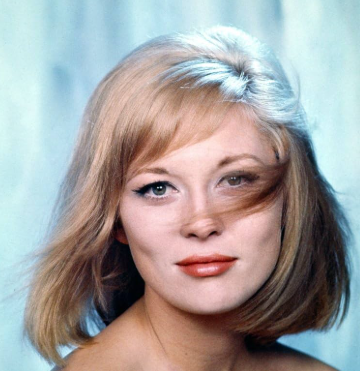
Faye Dunaway is a American actress, therefore bonnie and Clyde she had only ever had stage experience however the role bonnie is what rose her to fame. Penn strongly thought she was right for the role despite her lack of experience and convinced Warren Beatty to cast her.
Michael J. Pollard
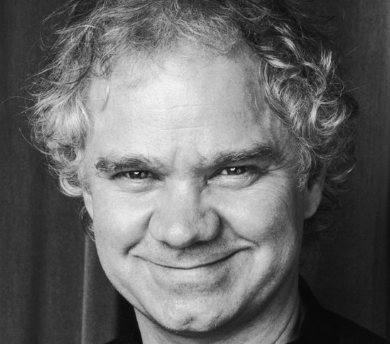
Michael J. Pollard was a American actor, he often played quirky, likeable supporting characters. He had small roles in stage and television before Bonnie and Clyde, he came best known for his role in C.W moss. He was cast due to playing side characters before and felt that he was right for the role.
Gene Hackman
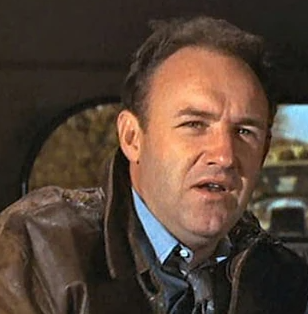
Gene Hackman a American actor, before his role in bonnie and Clyde he had small roles in Broadway and Tv episodes, his breakthrough being his role of buck barrow which he won Academy Award for. He was casted due to Warren Beatty being impressed with his role in “lilith.”
Denver Pyle

Denver Pyle a American film and television actor and director, he roles as a actor before this on a range of different shows. He played the Texas Ranger who seeks revenge on bonnie and Clyde.
Estelle Parsons
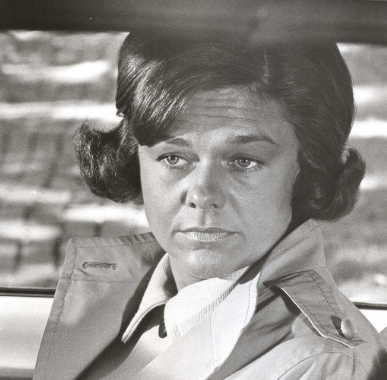
Parsons was a American singer and actress, she established her career on Broadway before progressing to film. She won a academy award for her role as Blanche Barrow.
Dub Taylor
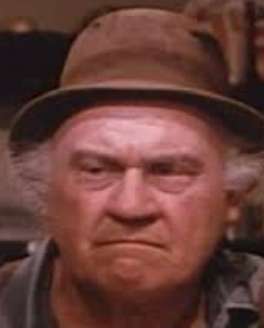
Dub Taylor is a American actor who became well known on film and television , he often starred in westerns and played the role of C.W moss’s dad.
Gene Wilder
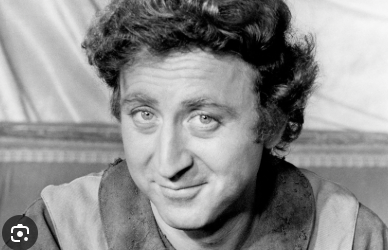
Gene Wilder was a American actor, comedian writer and filmmaker. His first film role was a hostage in bonnie and Clyde.
Mise- En -Scene

Bonnie and Clyde was shot in Texas on location where the movie was set. This was due to Penn wanting to work independently without a large studio influence and using a real setting made the movie seem realistic and natural bringing the audience into the universe of the world. The movie is set in the 1930s the time of the Great Depression where it reflects the desperate nature of the time with multiple representations of people with the struggle of money. The interior sets show this well with a lot of the places they stay in looking run down reflecting the nature of time, this all contributes to the movies verstmilltude. The customs of the movie also influenced female fashion of the time, Bonnies characters short hair and outfits became iconic to the movie with lots of women in the 1960s wearing berets. The props in Bonnie and Clyde also where a key factor such as the cars being key theme, Penn was lent the 1930s classic cars. I think its interesting how their cars become a key factor in there “running way.”
Editing
The editing of bonnie and Clyde breaks away from the traditional rules of classical Hollywood. The movie starts with a sequence of bonnie in her bedroom, the first shot being her mouth a extreme close up. From the very beginning this breaks all the conventical rules of classical editing. Throughout the movie the editing stood out to me as unnatural but I think following the frantic narrative of the story works extremely well. The use of the jump cuts in the starting sequence of the movie show the need bonnie needs for adventure even if she’s in her bedroom, with the camera cutting to her in different places in the room.
Sound
The sound in bonnie and Clyde includes the use of motifs, non diegetic and Foley sound. The sound motif consists of a Blue grass song played on the banjo from the 1930s this plays during a car scene normally at the end when Bonnie and Clyde have escaped. The use of this shows the unserious nature they have about what they have just done and creates a light and comic tone. The sound editor Dede Allan was the first person who used sound bridges which are found in bonnie and Clyde. The movie also uses Gun shot noises to evoke surprise in the spectator with them being loud compared to he movie
Aesthetics
Bonnie and Clyde is set in the 1930sa during the great depression the movie works to make the movie realistic by having them meet people who have been kicked off their farm by banks . This creates a sense of realism that they are living in that period as many people in the great depression lost their savings and property. A example of tone for me was the ending and how it intentionally shifts the tone for a abrupt ending to make the audience shocked.
The visual style is heavily inspired by the French new wave movement they often used location shooting and camera techniques such as close ups. Bonnie and Clyde was shot on location where it was set to create a further sense of realism. Penn also used close-ups such as Bonnies mouth which are apparently supposed to show her hunger for a different life.
Representations
Woman-
I think their in a range in the ways which women are represented we have Bonnie who breaks the traditional values and takes on a life of crime, but on the opposite to that we have the character of Blanche Barrow who throughout the movie is made to be terrified of the crime. Bonnies character is represented as daring and bold extremely different to the social norms of the time. However Blanches character is scared of the robbery and often waits in the car. I think that Penn’s intentions where to have the character of blanche to show how bold Bonnies behaviour really was.
Men-
Men are represented in bonnie and Clyde as not stereotypical robbers and “bad guys.” for example Clyde is often overpowered by Bonnie on the decisions made and is seen to have moments of compassion. For example when robbing a bank Clyde lets an old man keep his money due to the economic situation of the time. His character is purposely shown to have moments of sympathy, to Maybe further their “Robin Hood.” like reputation. Clyde also avoids in the beginning becoming too emotionally involved with Bonnie possibly showing his character in a vulnerable light. Another representation we get is C.W Moss who is nonthreatining and unintelligent, he is often intimidated and in Awe of Bonnie. For example getting a tattoo due to her telling him too. Both these representations of Men show that they can be tough but have moments of weakness developing them into well rounded characters.
Authority Figures-
Park Ranger- During the movie Bonnie and Clyde capture and humiliate the park ranger. They portray him as vengeful and determined to catch Bonnie and Clyde. When they humiliate him he spits at bonnie showing that he isn’t scared of them this represents his character as bold unlike overs who tried to catch them turning around.
People of Colour-
The movie doesn’t feature a main character of colour, a scene where a ranch has been repressed by the bank. Two men who built the ranch walk up to bonnie and Clyde. One of them being a person of colour fire a gun at the sign. However this character does not have any dialogue.
Working class people-
We see a number of working class people, Bonnie and Clyde being ones themselves. Throughout the movie you see people who have lost their property to the banks and the Great Depression. I think bonnie running away from her small waitressing job represents that the working class people in the movie hope for more.
Political and social Contexts in Bonnie and Clyde
Vietnam war- The movie was filmed in the 60s, while the Vietnam war was taking place. Penn recognised that people were seeing the violence on the news everyday. Penn decided to reflect that within his work by having loud gun shots and graphic scenes. The audience that Penn was targeting this at this was a younger generation, this generation was more open to counter- culture meaning that they could reflect on the violence.
JFK assassination – In the ending scene, Penn was the first person to show a gun being shot and the result in one take. This could of been reflecting on the JFK assassination which was extremely televised.
New Hollywood/Bonnie and Clyde
First Response
| Rating /10 | Why? | Memorable Scene |
| 7/10 | I really enjoyed the movie; I found that the pace worked an interesting level that you could personally feel the frantic energy of being on the run just by watching it. The Ending was also a very interesting point as throughout the movie you knew that they would be found but it was unexpected at that point. | My most memorable scene would be when they first meet as the movie goes from quite a relaxed environment of Bonnie following Clyde around the town, too suddenly bank robberies and action this really shocked me and stood out. |
French New Wave
What is meant by the cinematic term French New Wave?
French New Wave 1958-1960s
New Wave was a film movement from the 50s the movement was known for breaking the traditional filmmaking conventions. The term came from film critics who turned into the leading directors of the era. This was a rejection of classical Hollywood film making
What specific stylistic and structural elements are present in French new wave films?
Directors had a Auteur on each of their films. Previously to this the movie was recognized by the stars or studio which made the film. In the new wave each director took control of their movie and put their own distinctive twist on it.
Selection of music was used that matches the tone of the movie and added emotion at vital moments
Directors had low budgets, however this is what made the movies so creative traditional movie rules were broken such as filming on location and natural light. This made film accessible for everyone to create
As they were filming on location this meant that they often used non professional actors and used people in the location this created a sense of realism.
Film was used a medium to express peoples emotions.
Which directors and films from the French new wave influenced Arthur Penn a he was making bonnie and Clyde? why do you think this was the case?
His main influences were Francois Truffaut and Jean-Luc Godard. This was due to their style and knowledge of the new movement. The new movement and especially Jean-Luc Godard gave him the advice and inspiration to create something new. Godard experimented with jump cuts and location work which Penn went on to adapt into his movie in Bonnie and Clyde. The jump cuts where one of the first things which I noticed about Bonnie and Clyde and how it added a frantic pace into the movies nature. Francis Truffaut was best known for Gangster movies with a twist of a love story being involved which Penn used the concept for Bonnie and Clyde.
Jean-Luc Godard-
He was a French Swiss film director who came to prominence with New Wave group in France during the late 1950s and the 60s. He worked as a critic for many years before becoming a director himself. His most notible movies include:
Breathless 1960 – A Crime Drama film
Contempt 1963 – Drama/Melodrama
Pierrot le Fou 1965 – Romance/Crime
Francois Truffaut-
Francois was a French filmmaker, actor and critic, people see him as an icon of the French new wave movement. He was passionate about the Auteur theory and directors should create their own vision of the film. He made many notable films including:
The 400 Blows 1959 – Family/Drama
Jules and Jim 1962 – Romance/Comedy
Stolen Kisses 1968 – Comedy/Drama
Identify at least 3 scenes from Bonnie and Clyde where stylistic links are created with French New Wave cinema and say why this was the case.
Location shooting
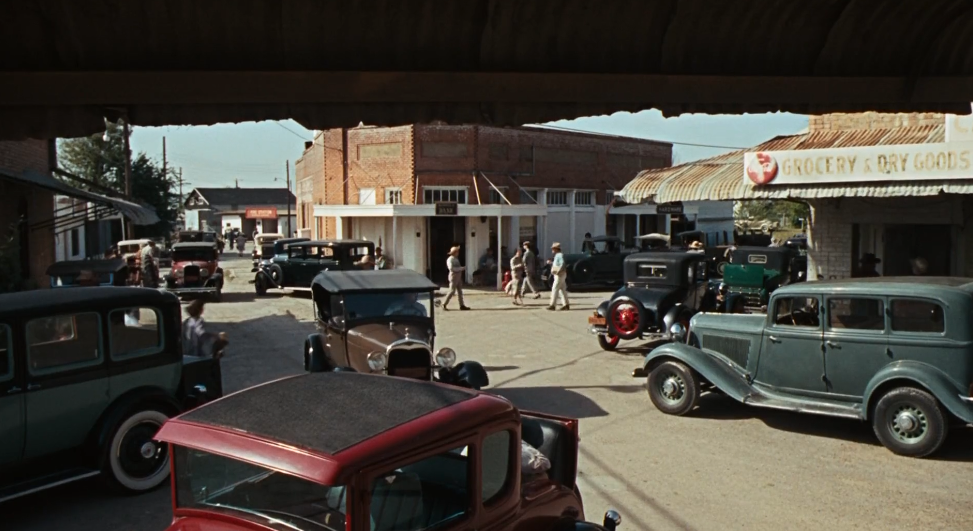
All the exterior shots of the movie where filmed on location in Texas, this gives Bonnie and Clyde a good sense of reality. The new wave movement popularized this due to budget they used real locations and natural lighting
Jump cuts
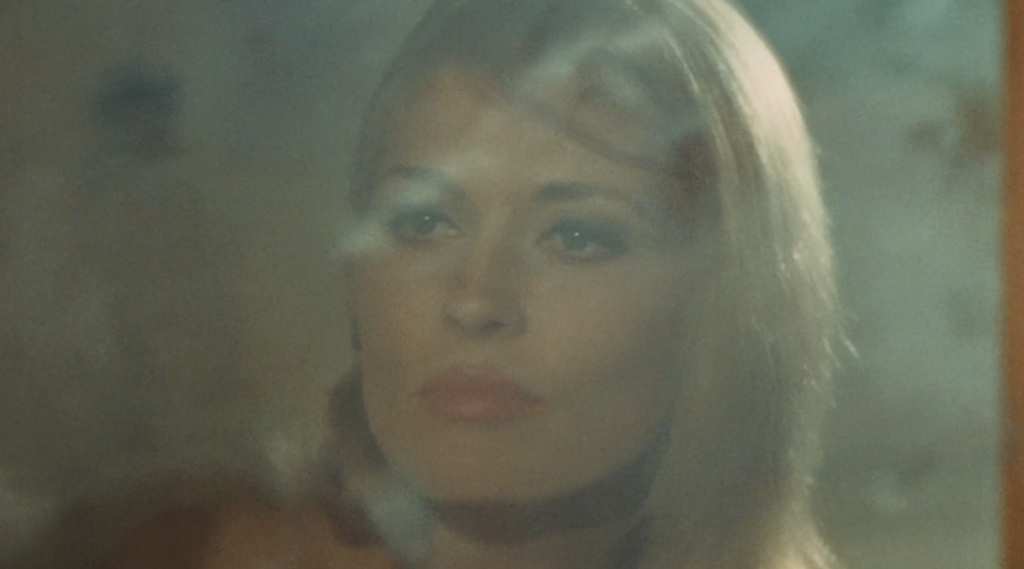
The jump cuts at the beginning of the film are very apparent as bonnie moves around her bedroom, again a style used by the French new wave movement.
Handheld

Some of the shots of the movie are handheld in Bonnie and Clyde which is helpful to achieve angles you couldn’t achieve on the steady cam. French new wave directors used handheld as they were easy to set up and use.
New Hollywood 1960-1990
Bonnie and Clyde, Arthur Penn (American)
What is meant by the term New Hollywood (Link to decline of the Hollywood Studio System)
The term new Hollywood follows the decline of the the old Hollywood era. Tv had slowly become a stable in every American household, this led to the “habit” being broken by going to the cinema every week. The films also being made at this time didn’t resonate with the American people meaning that many “flops” happened for example Cleopatra. Young people also moved to enjoying Foreign films more, as the American studios were out of touch with the interests of the younger generation.
Name some films, directors and stars from this period.
Directors-
Francis Ford Coppola
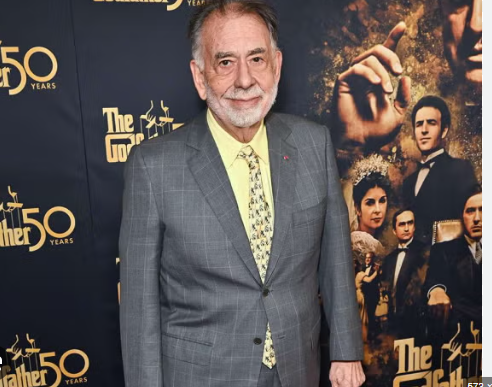
A American director born in 1939, He has worked on a range of different movies. However he is best known for the Godfather, a series of epic gangster movies.
Martin scorsese
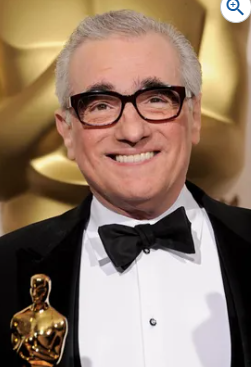
Martin Scorsese born 1942 is an American filmmaker. He emerged as a major figure in the New Hollywood era. He has received multiple awards for his most notable films such as Wolf of Wall Street 2013, Shutter Island 2010 and Killers of the Flower Moon 2023.
George Lucas

A American film director born 1944, he is best known for the Star Wars and Indiana Jones franchise.
Steven Spielberg

A filmmaker and a major figure of Hollywood, He is regarded as one of the best directors of all time. He has multiple iconic movies such as Jurassic Park, Schindlers List and War horse.
Films-
The Graduate 1967 Comedy/Drama/Romance
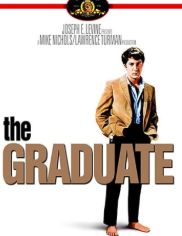
Mike Nichols
Easy Rider 1969 Adventure/Drama
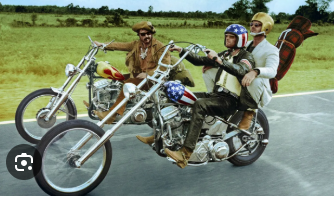
Dennis Hopper
Midnight Cowboy 1969 Drama
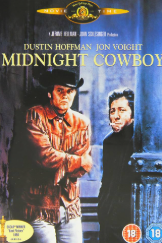
John Schlesinger
The Wild Bunch 1969 Action/Adventure/drama
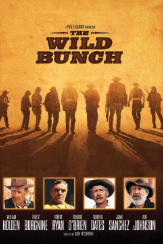
Sam Peckinpah
Stars-
Robert De Niro

Jane Fonda
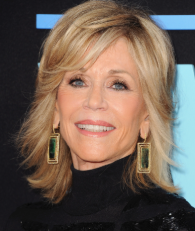
Al Pacino
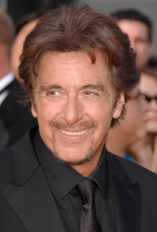
Jack Nicholson

What events were taking place in America around the period identified as the New Hollywood era of cinema?
Cold War 1991
The cold war was a period of geopolitical rivalry between the United States and the Soviet Union and their respective allies.
Vietnam War 1955 – 1975
A conflict which pitted the communist government of North Vietnam against South Vietnam its principal ally, the united states.
Casablanca (Curtiz, 1942)
Key actors
Humphrey Bogart-
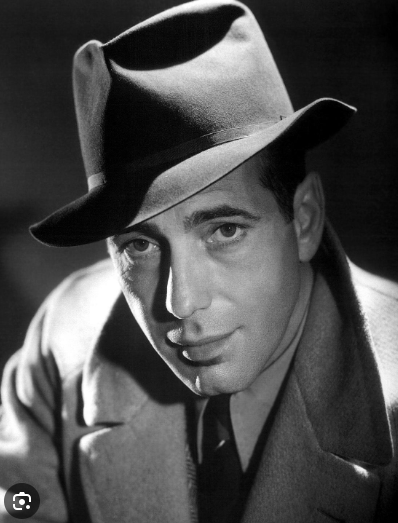
Humphrey Bogart, he was a star of classic Hollywood cinema. He began acting in Broadway Shows and supporting roles where he portrayed gangsters. Until he played the role of Rick in Casablanca, where I personally believe that he fitted the role well and matched the character within his acting and expressions. He had been building up his career at this point with warner bros who had been developing him as a main man. This was his first role where he played a part in a love story. This was his first role as a leading man before this he was in the Maltese falcon.
Ingrid Bergman-
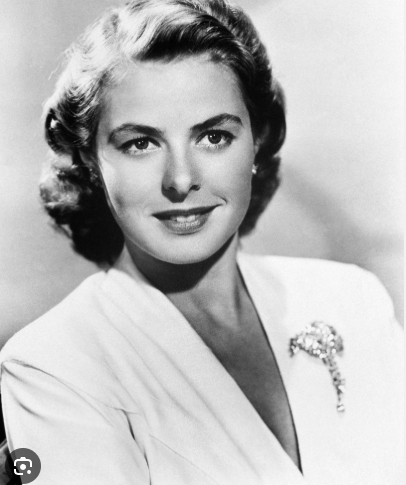
Ingrid Bergman is a Swedish actress, she was 26 when she starred in Casablanca early in her career. Before this she has experience in Swedish movies and stage. Warner brothers decided to cast her to represent Europe and attract Americans with her accent.
Paul Henreid-
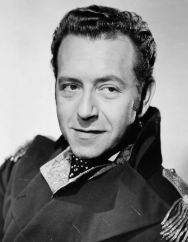
Henreid was an Austrian- American actor, director, producer. He appeared in British films before moving to America where he starred serval films such as Night Train to Munich (1940) Casablanca (1942) and Now, Voyager (1942). His elegant sophistication and middle-European accent made him ideal for romantic leading roles.
Claude Rains-
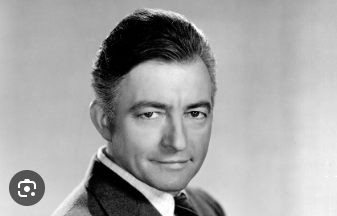
Rains was a British movie star who was best known for his distinguished voice, style and a range of different roles, ranging from villains to sympathetic gentlemen. Roles that he is recognised for are The Invisible Man (1933) and Casablanca.
Conrad Vedit-
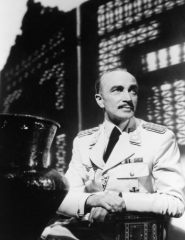
Vedit was a German born actor, who left Germany due to his strong anti-Nazi stance. He moved to the Uk but later left to the US, where he started in Hollywood. He starred in films such as Nazi Agent and Casablanca. His experience of having to leave his country due to war made is delivery in Casablanca so powerful.
Sydney Greenstreet-
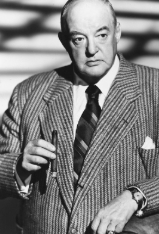
Greenstreet was a American and British actor. He had a range from musicals to detective movies. He started working for Warner Bros in 1941 where he starred in The Maltese Falcon (1942) and Casablanca where he played Signor Ferrari.
Peter Lorre-
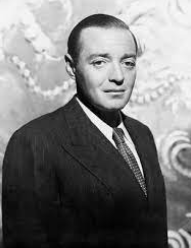
Lorre was a Hungarian -born American motion – picture actor who projected a sinister as a soft- voiced villain in thrillers. From (1941-1946) he worked at Warner Bros. and starred in Casablanca where he played Ugarte
S.Z Sakall-
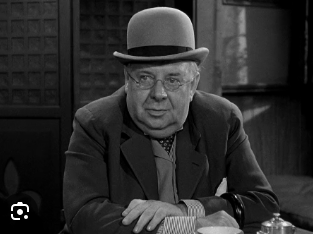
Sakall found success as a comedian in early German talkies, but as Hitler rose to power he returned to Hungary. But later when he came
Dooley Wilson-
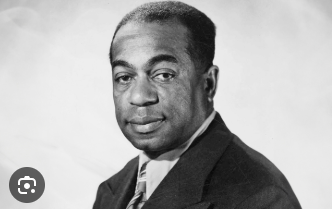
Wilson was a drummer and singer who led his own band in the 1920s, working in London and Paris. He was suited for the role due to his experience in music.
Joy Page-

Page was a American actress, Casablanca was her only movie with Warner Bros. She went on to act at different studios but Casablanca reminds her most known film.
Michael Curtiz (Director)
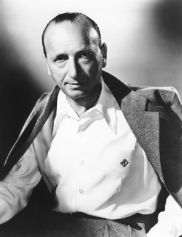
Michael Curtiz, was a Hungarian American film director, he is recognised as the most prolific directors in history, he worked into the Hollywood studio system. He was a well known Director when Warner Bros. invited him to Hollywood in 1926.
Mise En Scene–
- Elements of light and shadow when they are in love, for example when they are in Paris the lighting goes dark.
- Moments of emotional intensity the lighting is always dim.
- Hard light and shadows in Ricks.
- Sets had a great impact drama and emotion’s, with shadows and and rails creating drama.
- Every character has there own colour pallet, with the hero’s like Rick in soft colours.
- The woman had elegant clothes which portrayed innocence and beauty.
- A example of a Hollywood factory system
- All the characters appear glamorous and costume’s are always perfect
- The movie compared to the real Casablanca, the movie creates a fantasy version of Casablanca.
- The movie became more topical and powerful due to WW2V
- Every element of the film stands out
- All extras left there country due to war, can play the role well due to experience empathises with the role
- Ricks represents the best of Hollywood’s opportunity’s
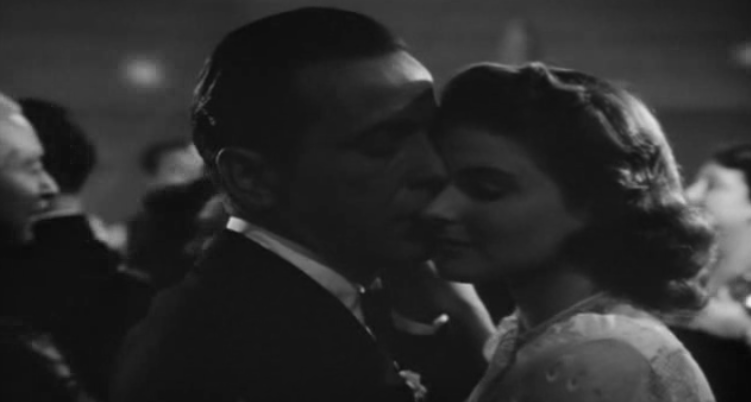
Editing-
- The editor is able to give hints of information of peoples feelings, for example that Rick is actually nice when he lets the young couple win the gambling.
- The editing is natural and allows the audience to feel like the movie is realistic due to how natural the cuts feel.
- The movie uses close ups to emphasis the tension in the moment, for example the shot of the letter when Rick is waiting at the train station.
- Movement of the camera was impressive, dolly, broke away from the normal style, and movement of the actor where camera moves around them
- This was made at the height at warner bros. studio with them mainly doing gangster films.

Sound-
- Music elevates the scene, such as when the crowd at the bar is singing the French national anthem ‘la Marseillaise’
- Max Steiner was the music composer
- When the Germans enter scenes the music changes
- The music acts as a motif with it playing with the letter on the train and as time goes by.
- The movie has mainly diegetic music
- Music creates energy in Ricks
- The dialogue stands out, with a contrast in funny one liners and serious emotional speeches.
- Ingrids accent stood out to the casting
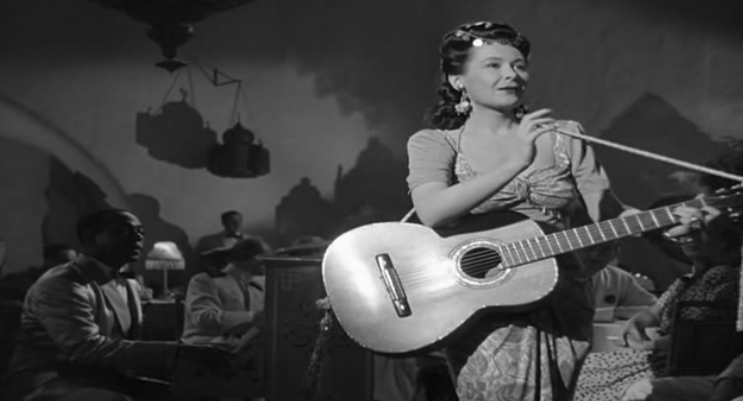
Aesthetics–
- the world that Casablanca is set in a fantasy of what Casablanca could be like.
- Their is a use of a sound motif to create a sombre tone
- The weather creates a tone, such as the storm over the runway
- The visual
- Hal. Wallis they oversee production, he chooses to buy the story. He negotiated a contract where he had the final say in the products, such as what actress for isla was going to be American or not. Wallis changed the story slightly to make it more synthetic for the Americans. The film is acting as propaganda for the Americans to view the Europeans
- 34 nationalities represented
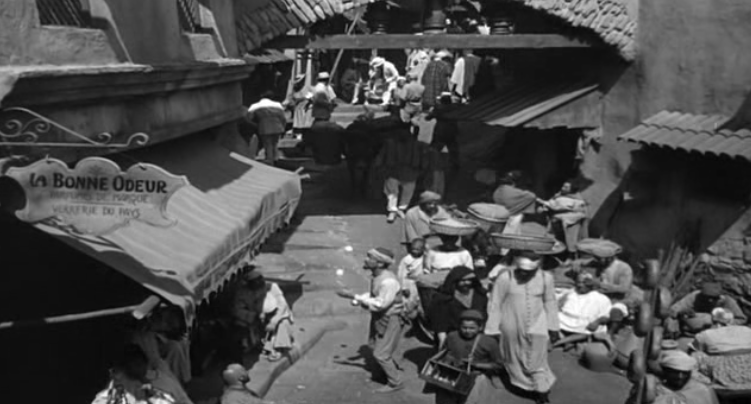
isolationism- This is a national policy of avoiding political or economic entanglements with other countries
Representations–
Woman-
In my opinion Casablanca represents woman as either victim’s or a trophy for men to try and win. this may of been a feature of the time, But throughout the movie the plot of IIsas story is that will she choose Rick or Laszlo and they do not give her a defining character or plot by herself. Her fate at the end is decided by Rick she doesn’t get a choice.
Men–
In Casablanca men are represented as tough people who don’t look out for overs, this is represented by Rick who makes it apparent that he doesn’t care about anything but msyelf. However this façade slips throughout the movie showing that he deep down does. This can be seen for many over men in the movie who undergo a transformation. This could represent that the men in the movie just have a extieor attuite
Americans-
script arrived the day after pearl harbour, which was a unexpected attack 1941, the war as been on for 2 years and 3 months. Themes which could relate with the American’s people.
Political and Social Contexts-
Allies. Great Britain, USA, USSR (Russia)
Axis. Germany, Italy, Japan
France. At the start of WW2, into 1940 France is invaded and defeated.
The Free French who are still fighting for the Allies.
Vichy France is working for the Germans
Morocco, Is under the Vichy French power
War starts in 1939 America doesn’t join until 1941 due to pearl harbour.
Operation Torch. November 8 – November 16 1942
Torch was a compromise operation that met the British objective of securing victory in North Africa while allowing American armed forces the opportunity to begin their fight against Nazi Germany and Fascist Italy on a limited scale.
“It captured the zeitgeist.”
The defining spirt or mood of a particular period of history, showing the ideas and beliefs at the time.
Casablanca Conference. January 14 to 24, 1943
Roosevelt and Churchill met to discuss the axis powers “unconditional surrender.” To plan the next phase of WW2.
Casablanca world premier
The world premier was in New York City on 26th of November 1942 it was released in the states on the 23rd of January 1943.
Movie Reels-
News was played at the movies, for about 10 minutes. Americans are learning about the war from the newspaper, radio and film.
Serendipity-
the idea of unexpected luck and chance
Film Noir
Film Noir is stylized Hollywood crime dramas which are shot in block and white and place emphasis on shadows. Themes of these movies often include use flashbacks and intricate plots.
Classic Noir
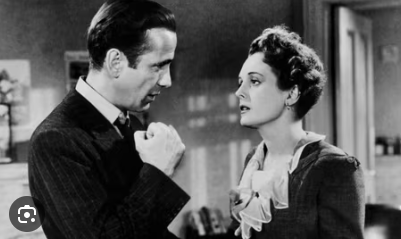
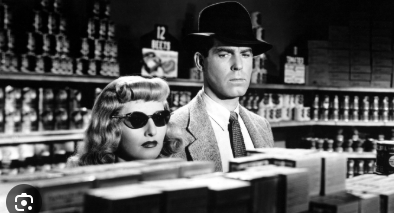
Neo Noir
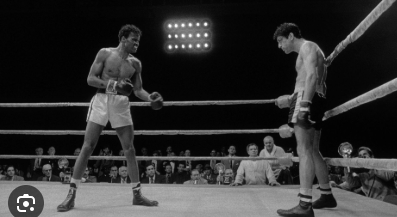
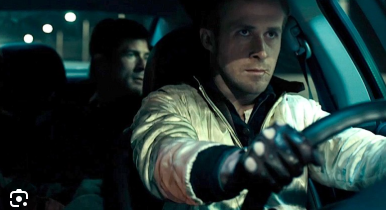
Casablanca (Curtiz, 1942) First Response
| Personal Rating | Memorable Scene | Why? |
| 7/10 | A memorable scene for me was the runway scene were Rick does a grand gesture and gets victor and Ilsa get on the plane together. This stood out to me due to the dialogue used and the music. The dramatic set with rain and thunder matched with dialogue evoked emotion me making it the most Memorable | The movie leads you to believe that Rick and Isla will get away but at this scene the movie takes a turn showing the morals rick had all along. The scene also has suspense building up to his decision making me immersed |
